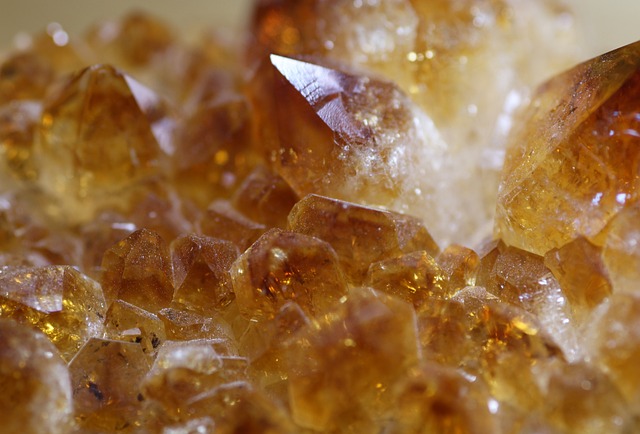To convert a Roth IRA into an investment portfolio that includes gold, one must set up a self-directed Roth IRA that allows for alternative assets like physical gold and precious metals. This requires selecting an IRS-approved custodian to manage these assets in line with regulations. Investors should ensure they understand the rules regarding contributions and taxes. The gold must meet IRS purity standards, sourced from reputable dealers and either stored in an IRS-approved depository or under specific conditions at home. A trustee experienced with precious metals is essential to navigate the process and comply with tax laws to maintain the Roth IRA's tax-advantaged status. The investment should be diversified, potentially including gold coins, bars, or bullion that are recognized by the IRS. Regular portfolio reviews and market monitoring are necessary to ensure the investment aligns with personal financial goals, offering both growth and protection against inflation.
Exploring the transformation of a Roth IRA into a gold-backed investment offers a window into alternative wealth strategies. This article navigates the process of setting up a self-directed Roth IRA tailored for precious metals, including gold—a move that can enrich your portfolio with tangible assets beyond the conventional stock and bond market offerings. We’ll guide you through each step, from compliance with IRS regulations to the acquisition of IRS-approved gold, and provide insights on managing and diversifying your holdings within this unique investment framework. Join us as we delve into the practicalities and benefits of integrating gold into your Roth IRA strategy for a diversified financial future.
- Establishing a Self-Directed Roth IRA for Gold Investments
- Compliance with IRS Regulations for Roth IRA Conversions
- Selecting a Trustee Specializing in Precious Metals
- Purchasing Approved Gold for Your Roth IRA
- Managing and Diversifying Your Roth IRA Gold Holdings
Establishing a Self-Directed Roth IRA for Gold Investments

To initiate the process of converting a Roth IRA to gold investments, individuals must first set up a self-directed Roth IRA that accommodates such alternative assets. This requires selecting a custodian firm specialized in holding physical gold and other precious metals as part of an IRA portfolio. The chosen custodian must be IRS-approved and have the necessary infrastructure to store and handle these types of investments compliantly. Once a suitable custodian is identified, investors can transfer funds from their existing Roth IRA into the new self-directed account, either through a direct rollover or by depositing funds that are then rolled over into gold assets.
The establishment of a self-directed Roth IRA for gold investments entails understanding the rules and regulations set forth by both the Internal Revenue Service (IRS) and the custodian. Investors must adhere to contribution limits, understand the tax implications of their investments, and ensure that the physical gold held within the IRA meets the purity standards set by the IRS. The gold must be sourced from a reputable dealer and stored in an IRS-approved depository or at home if certain conditions are met. It’s crucial to conduct thorough due diligence on both the custodian and the precious metals dealers to ensure the investments are made within a compliant and secure framework. This prudent approach will safeguard the investor’s savings and enable them to diversify their retirement portfolio with real assets like gold.
Compliance with IRS Regulations for Roth IRA Conversions

When considering a conversion of a traditional Roth IRA to one that includes physical gold and other precious metals, it is imperative to adhere strictly to Internal Revenue Service (IRS) regulations. The IRS stipulates that while Roth IRAs can be converted to other types of accounts, including those that hold gold and other precious metals, the process must comply with specific guidelines. The conversion itself is a taxable event, and it should be executed through a trustee-to-trustee transfer to maintain compliance. The IRS mandates that the gold held within the Roth IRA must meet purity standards; for instance, the gold should be 99.9% pure or better. Additionally, the precious metals must fall under certain categories as defined by the IRS for tax-advantaged retirement accounts. This includes gold, silver, platinum, and palladium in the form of coins, bars, or ingots that are recognized by the Commodity Futures Trading Commission (CFTC) as deliverable-grade or by an approved exchange or national board. Ensuring compliance with these regulations is crucial for maintaining the tax benefits associated with a Roth IRA and avoiding penalties. Investors should work closely with their financial advisor and a custodian specializing in precious metals to navigate this process correctly and ensure that their investment aligns with IRS requirements.
Selecting a Trustee Specializing in Precious Metals

When considering the conversion of a Roth IRA to gold or other precious metals, selecting a trustee with expertise in these assets is paramount. A trustee specializing in precious metals brings a wealth of knowledge and experience that general trustees may lack. These specialists understand the specific requirements for IRS-approved precious metals, ensuring that your investment adheres to the necessary standards. They guide you through the selection process, advising on the types of gold permissible within your Roth IRA—such as coins, bars, and bullion that meet fineness and purity criteria as outlined by the Internal Revenue Service (IRS). This expertise is crucial in navigating the nuances of precious metals investment within a retirement framework, safeguarding both your financial goals and compliance with tax laws.
Once you’ve identified a trustee with the appropriate specialization, the next step involves setting up the self-directed Roth IRA account. This account allows you to allocate funds toward physical gold and other precious metals, expanding your investment portfolio beyond conventional stocks and bonds. The process of opening such an account typically involves choosing a custodian or trustee firm that is approved by the IRS for holding these types of assets. It’s important to conduct thorough due diligence on the custodian, ensuring they have a solid reputation and offer robust security measures to protect your investments. With the account established, you can proceed with purchasing IRS-approved precious metals, thus diversifying your retirement savings in a way that traditional accounts cannot offer.
Purchasing Approved Gold for Your Roth IRA

Once you have set up a self-directed Roth IRA that permits investments in physical gold and other precious metals, the next step is to purchase approved gold that aligns with Internal Revenue Service (IRS) regulations. The IRS stipulates that for gold to be held within a Roth IRA, it must meet certain fineness and purity standards. Typically, the gold should be 99.5% pure or higher. This ensures that the investment adheres to the criteria set forth for precious metals in retirement accounts.
To acquire such gold, you can engage with IRS-approved dealers who specialize in precious metals for retirement accounts. These dealers provide a range of options, from coins to bars, that are recognized by the IRS. It’s crucial to conduct due diligence and select a reputable dealer to avoid any potential issues with compliance and authenticity. Once you have selected your gold investments, they must be transferred directly to an IRS-approved depository for safekeeping until you reach the age at which you can access your Roth IRA without penalties. This process not only preserves the tax advantages of your Roth IRA but also ensures that your investment in gold is compliant and secure within your retirement portfolio.
Managing and Diversifying Your Roth IRA Gold Holdings

Managing a Roth IRA with gold holdings requires careful consideration and a strategic approach. Investors must stay informed about the gold market, including factors influencing prices such as economic indicators, geopolitical events, and currency fluctuations. Regularly reviewing and adjusting your portfolio to align with your long-term financial goals is crucial. This involves monitoring the proportion of your gold investments relative to other asset classes within your Roth IRA. Diversification plays a key role in mitigating risk; while gold is often seen as a hedge against inflation and market volatility, it should complement rather than dominate your investment portfolio. A well-diversified Roth IRA might include a mix of gold, along with other precious metals like silver, platinum, and palladium, as well as traditional investments in stocks, bonds, and real estate to ensure a balanced approach that can potentially offer both growth and protection of your capital.
Diversifying your Roth IRA beyond physical gold to include various forms of gold-related investments—such as gold mining stocks, gold ETFs (Exchange Traded Funds), or gold mutual funds—can also be beneficial. These instruments provide exposure to the gold market without the direct ownership of physical metal. They can offer liquidity and may respond differently to market changes than actual gold holdings. Additionally, investors should be aware of the storage and insurance requirements for physical gold, as well as the reporting and transaction fees associated with these investments. Understanding the rules and regulations surrounding a Roth IRA invested in gold is essential to ensure compliance with IRS guidelines and to avoid any penalties or tax implications. Proactive management and thoughtful diversification can help safeguard your Roth IRA’s value through various economic cycles.
In conclusion, transitioning a Roth IRA into an investment vehicle for gold is a process that combines financial savvy with strategic planning. By setting up a self-directed Roth IRA that caters to precious metals, investors gain the advantage of diversifying their retirement portfolio beyond conventional stocks and bonds. It’s imperative to adhere to IRS regulations during the conversion process and to partner with a trustee well-versed in these types of investments. Once established, selecting the right type of gold that meets IRS standards is crucial. Effective management and diversification within this asset class can be a prudent approach to securing financial stability in retirement. With careful consideration and adherence to the guidelines outlined, investors can confidently integrate physical gold into their Roth IRA, potentially enhancing their investment’s resilience and growth potential over time.
